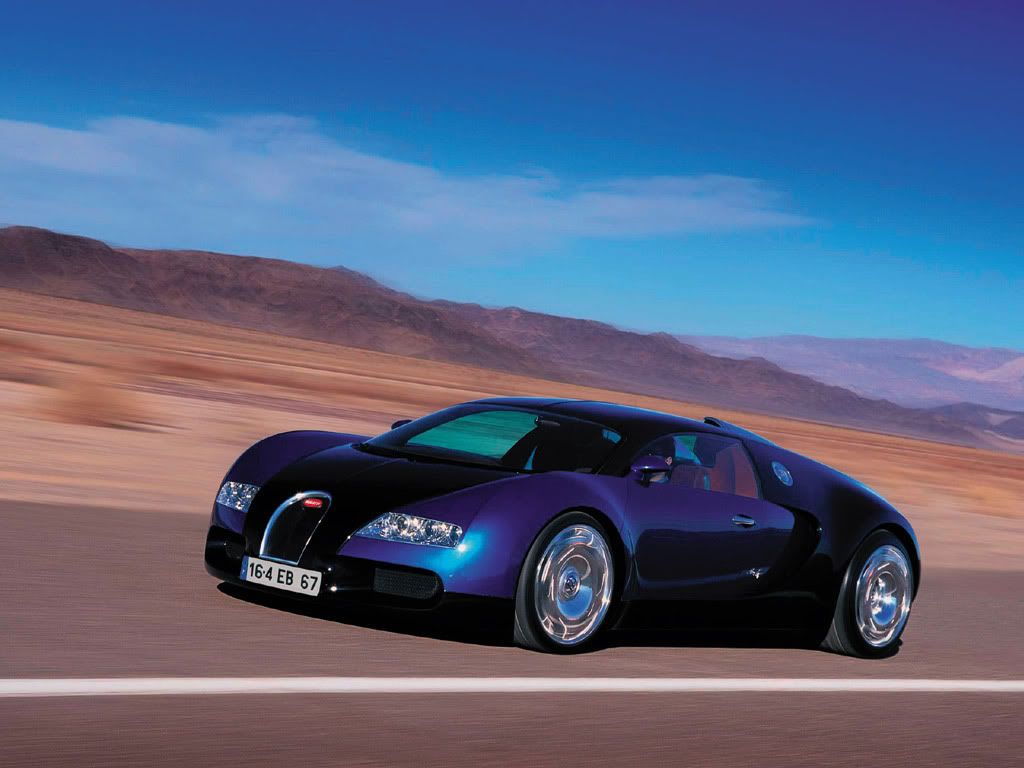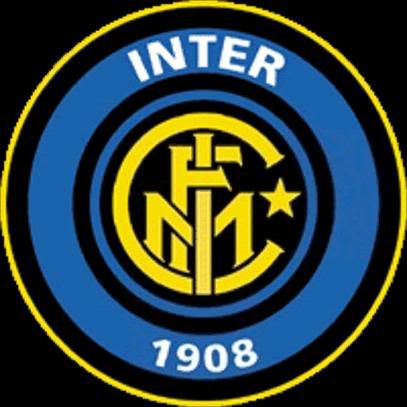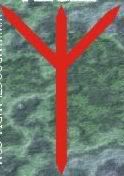Thursday, July 31, 2014
Bugatti Veyron Super Sport hits 246 mph on public road
Although the company having changed hands internationally over time, and now owned by Volkswagon; the name "Bugatti" will always be tied to its Milanese founder Ettore Bugatti.
From the video description (TheStradman):
1200 HP Bugatti Veyron Super Sport Pur Blanc hits 246.4 MPH!!
This $2.8M, 1200 HP Bugatti Veryon Super Sport Pur Blanc 1/1 hit 246.4 mph to set a new course record at the 2014 Sun Valley Road Rally!
The Pur Blanc is a One of One commissioned for Ben Chen. The Super Sport is a limited edition version of the Bugatti Veyron that set the production car record for top speed. Only 30 Super Sport Veyrons exist. The Super Sport set the record for fastest production car with a top speed of 267mph.
The Bugatti Veyron Super Sport is powered by a 8.0L W16 that produces a whopping 1200 horsepower. The standard Bugatti Veyron produces 1,001 horsepower. The Bugatti Veyron Super Sport is valued at USD $2.8 million. The Bugatti Veyron is quad turbocharged; it has 4 turbochargers. The Bugatti Veyron gets 8mph in the city and 12mpg on the highway.
Bugatti Veyron Super Sport hits 246 mph on public road (gallery in link)
By Jeff Glucker - MotorAuthority.com - July 28, 2014
Going fast on a private stretch of race track is quite enjoyable. Especially when there happens to be enough room to really let the car stretch its legs. That is why Volkswagen owns the Ehra-Lessien testing facility in Germany, which comes with a 5.4-mile long straight. It's also the perfect place to find the upper limits of a Bugatti Veyron. Sometimes though, an owner might get a chance to push his machine in a setting that's not quite as prepared for such an endeavor.
The 2014 Sun Valley Road Rally recently took place near Ketchum, Idaho. This event turns the beautiful stretch of Highway 75 into a closed-to-public-traffic roadway that sees high-powered vehicles running as hard as they can. The proceeds go to a charity, people have a good time, and fast cars are exercised extremely well.
It was at this event where a handful of Bugatti Veyrons took to the road to see just what they could accomplish. One of the Veyron beasties in attendance happened to be of the Super Sport variety. Actually, to make it even more rare, it is also a Pur Blanc. Of the 30 Super Sports built, Bugatti produced just one in Pur Blanc guise.
The driver of the car managed to hit a top speed of 246.4 miles per hour at one point, about 21 mph down on the car's record top speed. Nevertheless, this is, as you might imagine, a new record for the Sun Valley Road Rally. Thankfully, someone captured a brief piece of the run on video, which you can see above. It's pretty amazing to note that what sounds like a jet in the distance... is the car.
.
Labels:
automobile industry,
automobiles,
Bugatti,
cars,
Ettore Bugatti,
Milan,
Milanese heritage,
Milano
Tuesday, July 29, 2014
Annual "Carnival of Bagolino" in Val Sabbia - Part 2
Il Carnevale di Bagolino
Translated from the video description:
The Carnival of Bagolino is a rare and precious survival of local folklore. The carnival has existed in this village from 1500 due to the isolated location and the passion of its people who handed it down from generation to generation. It gained growing notoriety, attracting the attention of scholars of ethnology. The Festival is divided into two distinct events, animated by elegant figures of Balarì (dancers and musicians) and the grotesque figures of Maschér (masks).
This video is a documentary, and it shows more of the beauty of the village location in the Sabbia Valley. There are numerous other videos of the carnival. The festival seems to be a blend of both folk pagan and Christian elements. It seems appears to be disciplined as far as the symbolism it seeks to convey; as opposed to more urban festivals where people go out of their way to be bizarre... and perhaps miss the point. Part of the origin goes back to ancient fertility rites, and with this carnival occurring at the at the end of Winter.
.
Labels:
Brescia,
Brescian tri-valley,
Catholic,
festivals,
folk traditions,
folklore,
masks,
pagan,
Val Sabbia
Monday, July 28, 2014
Annual "Carnival of Bagolino" in Val Sabbia - Part 1
The dancers and masks of the traditional Carnival of Bagolino
By Claudia Moreschi - http://www.italianstorytellers.com/ - July 2, 2014
Dancers, masks and weird traditions. This is Bagolino Carnival!
Bagolino is a small village in Sabbia Valley, in the province of Brescia, on the border with Trentino Alto Adige. It is in the dairy production area of the local “Bagòss” cheese and is famous for its peculiar Carnival celebrations that date back to the XVI century, as documented by the writings preserved in the municipal archive.
Because of the isolated position of the village, the Carnival of Bagolino (also called ‘Bagosso‘ carnival) has preserved its historic characteristics during the years. Due to its particular folklore it has become increasingly renown drawing also the attention of scholar ethnologists. The Carnival of Bagolino has been ranked among the most important ethnological discoveries of the past 200 years.
The celebrations of the Bagolino Carnival are made up of 2 different performances, led by:
* the ‘Balarì‘, elegant dressed dancers and players
* the grotesque ‘Maschér‘ (masks).
The musical origins of the ‘Bagosso Carnival’ are yet to be discovered. Probably its music reportory roots in Continental Europe: according to scholars, it inherited the practice of instrumental musicians from Austrian Tyrol.
The movements of the dancers mime the ancient court dances, revisited and voiced in their own way by the Bagolino inhabitants.
 The Balarì
The Balarì‘Balarì‘, the dancers, perform only on the Monday and Tuesday of Carnival along the streets and in the squares of Bagolino. Their show is the most spectacular of all the Bagolino Carnival because of their peculiar music and refined dance. A unique event in Italy with only few equivalents in Europe. It provides a striking example of the level of complexity which a folk musical culture can reach.
Violin is the main instrument that gives the leading melody of the various songs that make up the large music repertory that accompanies the dances.
The dancers’ costumes are very characteristic. They wear a felt hat entirely covered by a long red ribbon cleverly folded, adorned with embroidery, jewelry and multicolored ribbons that make up a large bow. On the red band there are family (or borrowed) gold jewels (chains, brooches, earrings, rings etc.). That’s why they don’t peform their dance outdoors in case it rains : there is the risk of losing the gold!
The dancers’ face is hidden by an ivory mask and they wear a dark suit with jacket and pants to the knees, dark tie, white shirt, white gloves, white decorated socks and black shoes. On their shoulders they wear a large shawl with fringes falling down on their back and a wide silk stripe over their left shoulder with flower embroidery or lace inserts.
The Maschér
The tradition of the ‘Maschér‘ – the masks – has a more popular origin referring to the Carnival jokes. Identity is kept unknown.
The masks disordely move among the crowd wearing grotesque or frightening masks and wooden clogs that makes noise on the street pavement. They mock people by touching their genitals, an old habit reminiscent of ancient fertility rituals. Tradition has it that in ancient times the jokes had as polemical target the Counts of Lodrons, often hated by the Bagolino inhabitants.
The masks wear ancient traditional dresses; they usually move in pairs dressed disguised as old woman (‘vecia‘) and old man (‘vecio‘). In addition they move with an awkward posture, stomping and with a falsetto voice.
The maschér ritual is infused with symbolism and many gestures related to a courtship ritual.
The Carnival of Bagolino takes place every year on Sunday, Monday and Mardi Gras. This year will be on March from the 2nd to the 4th 2014.
Participation is free and recommended to anyone who doesn’t want to miss such an extraordinary and unique Carnival!
.
Labels:
Brescia,
Brescian tri-valley,
Catholic,
festivals,
folk traditions,
folklore,
masks,
pagan,
Val Sabbia
Sunday, July 27, 2014
Badalisc: Camunian folklore - Part III
Pre-Christian Alpine traditions
The central and eastern Alps of Europe are rich in folklore traditions dating back to Pagan (pre-Christian) times, with surviving elements amalgamated from Germanic, Gaulish (Gallo-Roman), Slavic (Carantanian) and Raetian culture.
Survival through the ages
Ancient customs survived in the rural parts of Austria, Switzerland, Bavaria, Slovenia, western Croatia and Italy in the form of dance, art, processions, rituals and games. The high regional diversity results from the mutual isolation of Alpine communities. In the Alps, the relationship between the Roman Catholic Church and paganism has been an ambivalent one. While some customs survived only in the remote valleys inaccessible to the church's influence, other customs were actively assimilated over the centuries. In light of the dwindling rural population of the Alps, many customs have evolved into more modern interpretations.
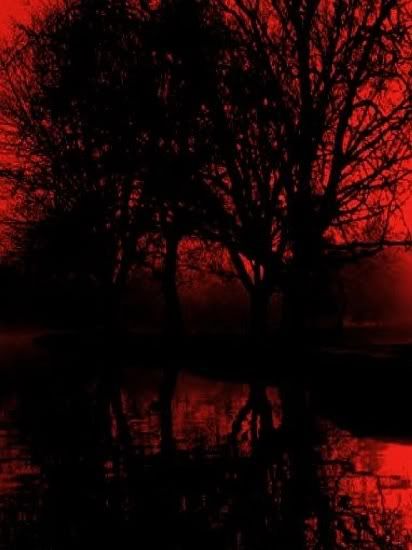 Krampus
KrampusThe word Krampus originates from the Old High German word for claw (Krampen). In the Alpine regions, the Krampus is a mythical horned figure represented as accompanying Saint Nicholas. Krampus acts as an anti–Saint Nicholas, who, instead of giving gifts to good children, gives warnings and punishments to the bad children. Traditionally, young men dress up as the Krampus in the first two weeks of December, particularly in the evening of December 5, and roam the streets frightening children and women with rusty chains and whips and bells. This figure is believed to originate from stories of house spirits such as kobolds or elves.
Perchten
Originally, the word Perchten (plural of Perchta) referred to the female masks representing the entourage of an ancient goddess, Frau Perchta, or Pehta Baba as it is known in Slovenia. Some claim a connection to the Nordic goddess Freyja, though this is uncertain. Traditionally, the masks were displayed in processions (Perchtenlauf) during the last week of December and first week of January, and particularly on 6 January. The costume consists of a brown wooden mask and brown or white sheep's skin. In recent times Krampus and Perchten have increasingly been displayed in a single event, leading to a loss of distinction of the two. Perchten are associated with midwinter and the embodiment of fate and the souls of the dead. The name originates from the Old High German word peraht ("brilliant" or "bright").
Regional variations of the name include Berigl, Berchtlmuada, Berchta, Pehta, Perhta-Baba, Zlobna Pehta, Bechtrababa, Sampa, Stampa, Lutzl, Zamperin, Pudelfrau, Zampermuatta and Rauweib. The Roman Catholic Church attempted to prohibit the sometimes rampant practise in the seventeenth and eighteenth centuries but later condoned it, resulting in a revival.
 In the Pongau region of Austria large processions of Schönperchten ("beautiful Perchten") and Schiachperchten ("ugly Perchten") are held every winter. Other regional variations include the Tresterer in the Austrian Pinzgau region, the stilt dancers in the town of Unken, the Schnabelpercht ("trunked Percht") in the Unterinntal region and the Glöcklerlaufen ("bell-running") in the Salzkammergut. A number of large ski-resorts have turned the tradition into a tourist attraction drawing large crowds every winter.
In the Pongau region of Austria large processions of Schönperchten ("beautiful Perchten") and Schiachperchten ("ugly Perchten") are held every winter. Other regional variations include the Tresterer in the Austrian Pinzgau region, the stilt dancers in the town of Unken, the Schnabelpercht ("trunked Percht") in the Unterinntal region and the Glöcklerlaufen ("bell-running") in the Salzkammergut. A number of large ski-resorts have turned the tradition into a tourist attraction drawing large crowds every winter.Sometimes, der Teufel is viewed to be the most schiach ("ugly") Percht (masculine singular of Perchten) and Frau Perchta to be the most schön ("beautiful") Perchtin (female singular of Perchten).
Badalisc
The Badalisc is a "good" mythological animal who lives in the woods of Andrista, in Val Camonica, Italy. During an annual town festival someone dresses up as the creature and is "captured" and brought to the town. The animal is made to tell the people of the town gossip. At the end of the festival the creature is released until the next year's ceremony.
.
Labels:
Alpine,
Austria,
Bavaria,
central Europe,
Croatia,
Eastern Alps,
folklore,
Gaulish,
German,
Italy,
legends,
pagan,
pre-Christian,
Raetia,
Slavic,
Slovenia,
Switzerland
Saturday, July 26, 2014
Badalisc: Camunian folklore - Part II
'Baldalisc' from ILoveIndia.com
Badalisc, a popular Christmas character from Italy, came into existence in the 16th century and became very famous. Scroll further for more information on this Italian Christmas character.
Badalisc
Have you ever heard about character of Christmas, Badalisc? Considered to be a mythological character whose origins lie in Val Camonica, Italy, Badalisc belongs to the southern central Alps. This scamp is believed to have a very unusual appearance with a big head, two horns, a gigantic mouth and bright shining eyes. It is said to wear goat skin to cover his entire body. During Christmas, while the annual town festival is being held, the person dressed like Badalisc is seized and brought to the town.
Towards the end of the festival, the creature is released and people eagerly wait for the ceremony next year. Though Badalisc reveals the gossips of the community and annoys everyone, its main aim is to prevent people from performing bad deeds. This ritual is quite similar to that of Bosinada, Bosinade or Businade, which is a satirical performance of a prose, song or poetry. Right from the 16th century, this ritual has been performed throughout northern Italy.
 Badalisc - Legends and Myths
Badalisc - Legends and Myths* Badalisc, also known as 'Badalisk', is a mythological character found in the southern central Alps. He is said to hail from Val Camonica and, today, it is characterized as a creature with an enormous head, shining eyes and a huge mouth; it dresses up in goat skin.
* According to the legend, this animal, which lives in the woods of Andrista, is captured by the villagers during Ephiphany, i.e. January 5 and 6. Badalisc is then tied with a rope and dragged into the village, accompanied by musicians and various masked characters. These characters include 'il giovane' (the young man), 'la vecchia' (the old woman), 'il vecchio' (the old man) along with the young signorina, who is "bait" for the animal's hunger.
* Some bearded shepherds also follow the crowd. And while some witches beat drums, a hunchback involves in a rustic duel with the creature. According to the tradition, only men take part in this ritual although some of them are dressed as women. This is because during the early times, women were forbidden from participating in any exhibitions and were not allowed to either see or hear the Badalisc's speech. Women who did hear the speech or took part in the "seize" were denied permission to attend the Holy Communion, which was held the following day.
* Badalisc's speech includes gossips about the community and is now interpreted in rhymes. Its speech is believed to reveal all the sins and the shrewdness of the community and the hunchback bangs his stick rhythmically in regular intervals during the speech.
* Followed by the speech, there is singing, dancing and feasting during which the community enjoys Badalisc polenta, a special curd sausage which is the traditional dish of the village. Until recent times, the village children used to from house to house, begging for money to get cornmeal for the polenta. During the feast, Badalisc enjoys a special place of honor.
* Towards the end of the exhibition, on the second day, Badalisc is freed and allowed to go back to the woods.
So, everybody, be careful and stay away from intentionally indulging in an ill-deed or else, you would hear Badalisc blurt it before the entire community.
.
Labels:
Badalisc,
Camunian folklore,
Cevo,
festivals,
legends,
Val Camonica
Friday, July 25, 2014
Badalisc: Camunian folklore - Part 1
Badalisc
The Badalisc (also Badalisk) is a mythical creature of the Val Camonica, in the southern central Alps. The Badalisc is represented today as a creature with a big head covered with a goat skin, two small horns, a huge mouth and glowing eyes.
The celebration
According to legend the Badalisc lives in the woods around the village of Andrista (commune of Cevo) and is supposed to annoy the community: each year it is captured during the period of Epiphany (5 & 6 January) and led on a rope into the village by musicians and masked characters, including il giovane (the young man), il vecchio (the old man), la vecchia (the old woman) and the young signorina, who is "bait" for the animal's lust. There are also some old witches, who beat drums, and bearded shepherds, and a hunchback (un torvo gobetto) who has a "rustic duel" with the animal. Traditionally only men take part, although some are dressed as women. In ancient times women were prohibited from participating in the exhibition, or even to see or hear the Badalisc's Speech; if they did so they would be denied Holy Communion the following day.
In the village square (formerly in a stable) the Badalisc's speech (la 'ntifunada) is read, in which the mythological animal gossips about the community. The Badalisc itself is a dumb creature, so the speech, nowadays written in rhyme, is read by an "interpreter". Once improvised, now written in advance, the speech reveals all the supposed sins and scheming of the community. During the speech the hunchback bangs his stick rhythmically at intervals.
The speech is followed by singing, dancing and feasting. In the evening the community eats the "Badalisc polenta" (a commercial version of this traditional food was launched in 2010). Until recently, village children would beg from house to house during the Badalisc celebrations for cornmeal to make the polenta; a Badalisc salami was also specially made for them. The badalisc has place of honour at the feasts.
 On the second day, at the end of the exhibition, the Badalisc is set free and allowed to return to the woods.
On the second day, at the end of the exhibition, the Badalisc is set free and allowed to return to the woods.
Related customs
The ritual has strong similarities with the Bosinada, Bosinade or Businade, satirical performances of prose, poetry or song, in which a storyteller (the Bosin) denounced the misdeeds of the community. Known from the 16th century, these were once widespread throughout northern Italy and derived from the purification rituals of New Year's Eve.
Any link between the Badalisk of Andrista and the mythical Basilisk (half lizard, half serpent, with a head like a cat, but squarer, like a toad) that incinerates everything on which it rests its gaze (well known in Cevo and elsewhere in northern Italy) is unclear.
.
The Badalisc (also Badalisk) is a mythical creature of the Val Camonica, in the southern central Alps. The Badalisc is represented today as a creature with a big head covered with a goat skin, two small horns, a huge mouth and glowing eyes.
The celebration
According to legend the Badalisc lives in the woods around the village of Andrista (commune of Cevo) and is supposed to annoy the community: each year it is captured during the period of Epiphany (5 & 6 January) and led on a rope into the village by musicians and masked characters, including il giovane (the young man), il vecchio (the old man), la vecchia (the old woman) and the young signorina, who is "bait" for the animal's lust. There are also some old witches, who beat drums, and bearded shepherds, and a hunchback (un torvo gobetto) who has a "rustic duel" with the animal. Traditionally only men take part, although some are dressed as women. In ancient times women were prohibited from participating in the exhibition, or even to see or hear the Badalisc's Speech; if they did so they would be denied Holy Communion the following day.
In the village square (formerly in a stable) the Badalisc's speech (la 'ntifunada) is read, in which the mythological animal gossips about the community. The Badalisc itself is a dumb creature, so the speech, nowadays written in rhyme, is read by an "interpreter". Once improvised, now written in advance, the speech reveals all the supposed sins and scheming of the community. During the speech the hunchback bangs his stick rhythmically at intervals.
The speech is followed by singing, dancing and feasting. In the evening the community eats the "Badalisc polenta" (a commercial version of this traditional food was launched in 2010). Until recently, village children would beg from house to house during the Badalisc celebrations for cornmeal to make the polenta; a Badalisc salami was also specially made for them. The badalisc has place of honour at the feasts.
 On the second day, at the end of the exhibition, the Badalisc is set free and allowed to return to the woods.
On the second day, at the end of the exhibition, the Badalisc is set free and allowed to return to the woods.Related customs
The ritual has strong similarities with the Bosinada, Bosinade or Businade, satirical performances of prose, poetry or song, in which a storyteller (the Bosin) denounced the misdeeds of the community. Known from the 16th century, these were once widespread throughout northern Italy and derived from the purification rituals of New Year's Eve.
Any link between the Badalisk of Andrista and the mythical Basilisk (half lizard, half serpent, with a head like a cat, but squarer, like a toad) that incinerates everything on which it rests its gaze (well known in Cevo and elsewhere in northern Italy) is unclear.
.
Labels:
Badalisc,
Camunian folklore,
Cevo,
legends,
Val Camonica
Saturday, July 19, 2014
A folk-spirit journey will lead back to the self
"While becoming, we discover, we already are."
This quote is from YouTube user and Heathen Widdershins, left on the applicable video 'Northern Ethics' from Northern Runes Radio. It's not about "ego," but about the folk journey of the self and the connection leading back to you and what is already inside of you. "Ancestral memory," "inherent values," and "making connections to the ancestors." You may discover one favorite ancestor in particular. It could be a person who nobody thinks about anymore. Even if they're a great or great-great grandmother or grandfather... are they not still "your Mother" or "your Father?" Perhaps before one jumps into communing with the goddesses and gods, metaphysics, etc.; one should first commune in this manner. Anyway, the above is a great quote... striking right to the point.
.
Wednesday, July 16, 2014
Real Madrid CF vs. Inter Milan on July 26 in Berkeley, California
Real Madrid CF and Inter Milan Stage Showdown on Cal Campus
BERKELEY – Relevent Sports, a division of RSE Ventures announced that top international clubs Real Madrid CF and Inter Milan will face off at Kabam Field at California Memorial Stadium on the University of California, Berkeley campus on Saturday, July 26, as part of the Guinness International Champions Cup. Kickoff for the contest, which will be broadcast internationally in more than 150 countries and domestically on Fox Sports 2, is set for 3 p.m. PDT.
“It’s a unique opportunity to bring two of the world’s biggest soccer clubs to the world’s leading public university,” said Berkeley Vice Chancellor for Administration and Finance John Wilton. “It's part of our strategy to diversify revenues, and financially support our athletics programs and our core mission of excellence and access in academics and research. As part of the agreement, 25 percent of the soccer match guarantee will be dedicated to academic scholarship support. The match will also give us a chance to share a beautiful part of our campus with soccer fans across Northern California and will have a positive economic impact on the city of Berkeley.”
Exclusive presale tickets for the Real Madrid v. Inter Milan match will be available Monday, May 12, at 9 a.m. PDT for pre-qualified fans, while the general public will have access to tickets beginning Friday, May 16, at 9 a.m. PDT through the Cal Athletic Ticket Office by clicking here. Tickets for this game will start as low as $45. Additionally, fans will have the opportunity to purchase an Ultimate Fan Pack, which includes one supporter’s section ticket, team gear and priority access to select team training. Also available are VIP Team Travel Packs that allow fans to experience the games alongside their favorite teams, including Real Madrid and Inter Milan, providing VIP tickets, charter travel and world-class accommodations to all of their teams’ Guinness International Champions Cup games. All tickets and packages are available at www.internationalchampionscup.com.
 |
| Sponsor: Pirelli Tire Company from Milan |
“The Bay Area has long been a soccer hotbed and we are thrilled to bring the first professional soccer game to Kabam Field at California Memorial Stadium at University of California, Berkeley,” said Relevent Sports Chief Executive Officer Charlie Stillitano. “Real Madrid and Inter Milan are two of the most famous clubs in the world and always draw huge crowds; we are confident this will be no different when they kick off their 2014 Guinness International Champions Cup on Kabam Field.”
The world’s most decorated club, Real Madrid has won a record 32 La Liga and a record nine European Championships/UEFA Champions League titles. The club was named FIFA Club of the 20th Century and received the FIFA Order of Merit in 2004. Madrid fans consistently pack the 80,000+ Santiago Bernabeu Stadium in downtown Madrid since 1947.
Founded in 1902, Los Blancos currently field a roster featuring the reigning Ballon d’Or winner Cristiano Ronaldo (Portugal) as well as Gareth Bale (Wales) and Spanish talent Sergio Ramos and Xabi Alonso. Led by former Roma and AC Milan midfielder and first year manager Carlo Ancelotti, Real Madrid returns to the Guinness International Champions Cup after winning the inaugural tournament, beating Chelsea 3-1 on the strength of two goals from Cristiano Ronaldo. For more information on Real Madrid, visit www.realmadrid.com. “Real Madrid is thrilled to return to the Bay Area of California for the first time since 2010. The team is proud to play the first-ever soccer game at California Memorial Stadium and there’s no doubt it will be a great event when the club takes on a top European club like Inter Milan,” said Real Madrid CF.
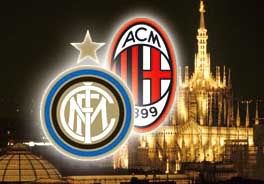 F.C. Internazionale Milano, popularly known as Inter, is one of the most famous clubs in world football. Since its foundation in 1908, it has always played in Serie A and has captured 18 Serie A titles, three European Cups/UEFA Champions League, two Intercontinental Cups, One FIFA Club World Cup, three UEFA Cups, seven Italian Cups and five Italian Super Cups.
F.C. Internazionale Milano, popularly known as Inter, is one of the most famous clubs in world football. Since its foundation in 1908, it has always played in Serie A and has captured 18 Serie A titles, three European Cups/UEFA Champions League, two Intercontinental Cups, One FIFA Club World Cup, three UEFA Cups, seven Italian Cups and five Italian Super Cups.The club is currently managed by Walter Mazzarri and is led by legendary Argentine captain Javier Zanetti alongside his countrymen Rodrigo Palacio and Esteban Cambiasso. In September, Indonesian businessman Erick Thohir became the majority shareholder of the club. Thohir also owns Major League Soccer club D.C. United.
Further details about the Guinness International Champions Cup can be found at www.internationalchampionscup.com. Teams required to qualify for 2014-15 international competition based on 2013-14 domestic league finishing position may be subject to change.
.
Labels:
Madrid,
Milan,
Milano,
Northern California,
soccer
Tuesday, July 15, 2014
New Steve McNallen interview on Red Ice Radio - "ancestral roots & metagenetics"
This is a new interview, posted on YouTube two days ago.
Steve McNallen goes deeper into the spiritual and scientific side of things. “Synchronicity”
was tied into the discussion as well. I wrote down a few points and
observations. He compared death to a “curtain,” in which messages can occasionally
get through from both directions. He brought up an interesting example as far
as the disconnect between individuals and their roots; a present day family at
the dinner table, and nobody is speaking to each other, as they’re too busy
checking their cell phones, tablets, etc. Henrik, the host from Sweden, brought up a recent
book that is said to show evidence between the ancient Norse and the ancient
Greeks; I think partly due to the similarities between the two mythologies.
Steve asked for the information on that, but didn’t comment on it.
One interesting pattern and I’m not suggesting any
specific person or organization is that Guido von List is never mentioned that
I can see. In this interview, Friedrich
Nietzsche and Carl Jung were discussed,
but not List. “Metagenetics” is a bio-spiritual scientific belief that ancestry and metaphysics are systemically
tied together. In so many spiritual traditions, especially in the east,
there is no need to even mention this item because it isn’t even considered a
part of wisdom. It would be like insisting that one should breathe oxygen. In
the West however, and only within European/north European traditions, this
passes as “controversial.” Since those traditions were genocided long ago,
apparently the “guilt complex” doesn’t apply here. When someone delivers “controversy”
to your doorstep, and only to your doorstep, it’s not easy to just ignore it.
Stephen A. McNallen is a prominent religious leader of the native
European path called Asatro. McNallen established the first legally
recognized Asatro organization in the US in 1972 and quickly became a
prolific writer and speaker on the subject on Germanic Paganism, which
broadly includes the ancient tribes of Northern Europe. He believes that
spiritual fulfillment is best achieved by following the ways of one's
ancestors. In the first hour, Stephen addresses the importance of
venerating our ancestors. He explains how discovering our ancestral past
is vital for our future. We'll talk about what happens when one is cut
off from their ancestral roots and how powerful interests rely on it.
Stephen discusses how the "world managers" work to get the masses to
lose their impulse for something deeper. They belittle honor, courage
and heroism for reasons of control as these pose a threat to the system.
Later, Stephen talks about the falsification of Europe's history, which
always portrays Europeans as the evil ones, and people disown their
ancestors because of it. In the member's hour, we'll hear about
metagenetics and the idea that ancestry matters - that there are
spiritual and metaphysical implications to heredity. He ties together
varied topics as Jung's theories of archetypes, rebirth in the family
line, psychic links between twins, and the Norse concept of the soul to
support that statement. We'll also talk about how biology is being
ignored to push egalitarianism. Later, McNallen talks about reigniting
the spark, reconnecting to that which is in us. We're the outcome of all
who have gone before us and their decisions up until this point. The
hour ends on Odin's model of evolution.
Supermoon huddle
I thought I would add this here since Steve McNallen has
mentioned many times the importance of retreats. Again, I’m not an Odinist.
However, this past “supermoon” three days ago, a few of us gathered in a
special location at the base of the northern Santa Cruz mountain chain. It was
at a spot that we had not used before. It was at a location that was not hard
to get to, but secluded, making it a perfect place to take a mini-retreat. A
retreat doesn’t have to take a whole weekend, with lots of planning. I can’t
stress it enough, sometimes you need to be physically distanced from it all,
with no distractions; something a little more than a backyard retreat.
It was 9:45 PM, and a stream of clouds traveling in one
direction blocked out the bright moon most of the time as we sat on a wide gravel
trail at the base of a hill. We usually go for a location within the trees, but
this was a nice alternative. An occasional breeze of warm yet cool air blew
against my face during the otherwise still night. The dark mountains stood
majestically against the dark blue sky. There was enough moonlight through that
endless stream of clouds to illuminate the trail and hillside. The hazy light
was beautiful, almost ethereal. For a moment, I recall thinking why can’t we do
this more often?
When we first arrived, an owl flew up upon a branch about
forty feet high. It stayed there for about five minutes. I tried to take its
picture, but it was too high for the flash to be effective. It felt special to
have an owl do something they rarely do. It was a special evening, with the
clouds continuously swirling around the moon’s bright light. At one point I got
up from my chair and walked down the wide trail for a while, beer in hand. I
enjoy just thinking about what I want to think about in this type of location,
and not what someone else thinks I need to be thinking about.
Sometimes, and not just because of a buzz from several
beers, a special location can enhance certain emotions, and everything and
everyone past and present seems timeless and together… and with the better of
it all rising in spirit. Especially as I looked at the swirling clouds around
the moonlight like sparks. Maybe the nearby mountains are like a spiritual
antennae at night; opening that curtain between worlds of time. A large raccoon
suddenly appeared walking across the trail, bringing me back to earth, and I
returned to the camp.
There are two more "supermoons" left this year (August & September), and one more blood moon in October.
.
Labels:
ancestry,
Heathen tradition,
metagenetics,
metaphysics,
retreats,
Steve McNallen
Subscribe to:
Posts (Atom)

